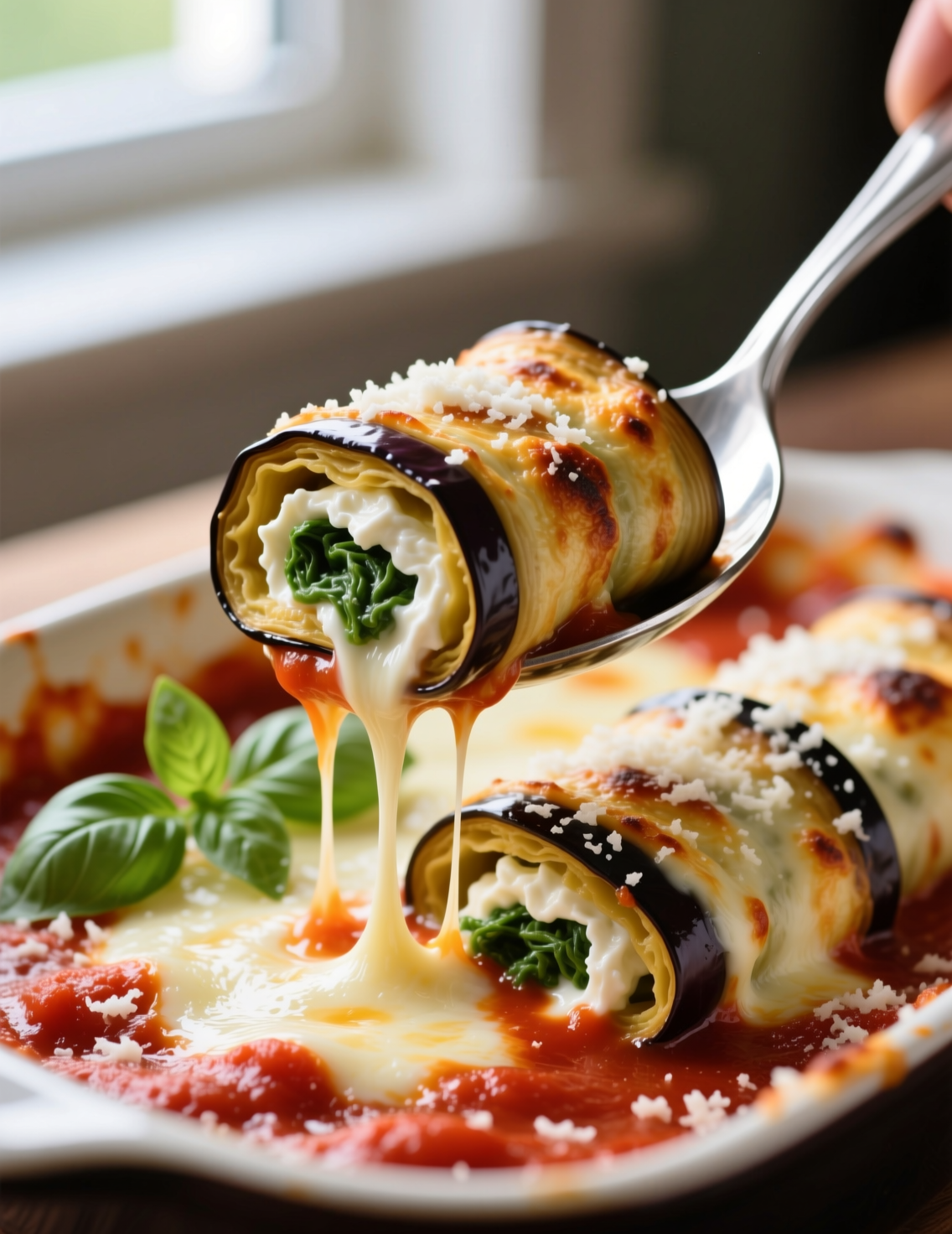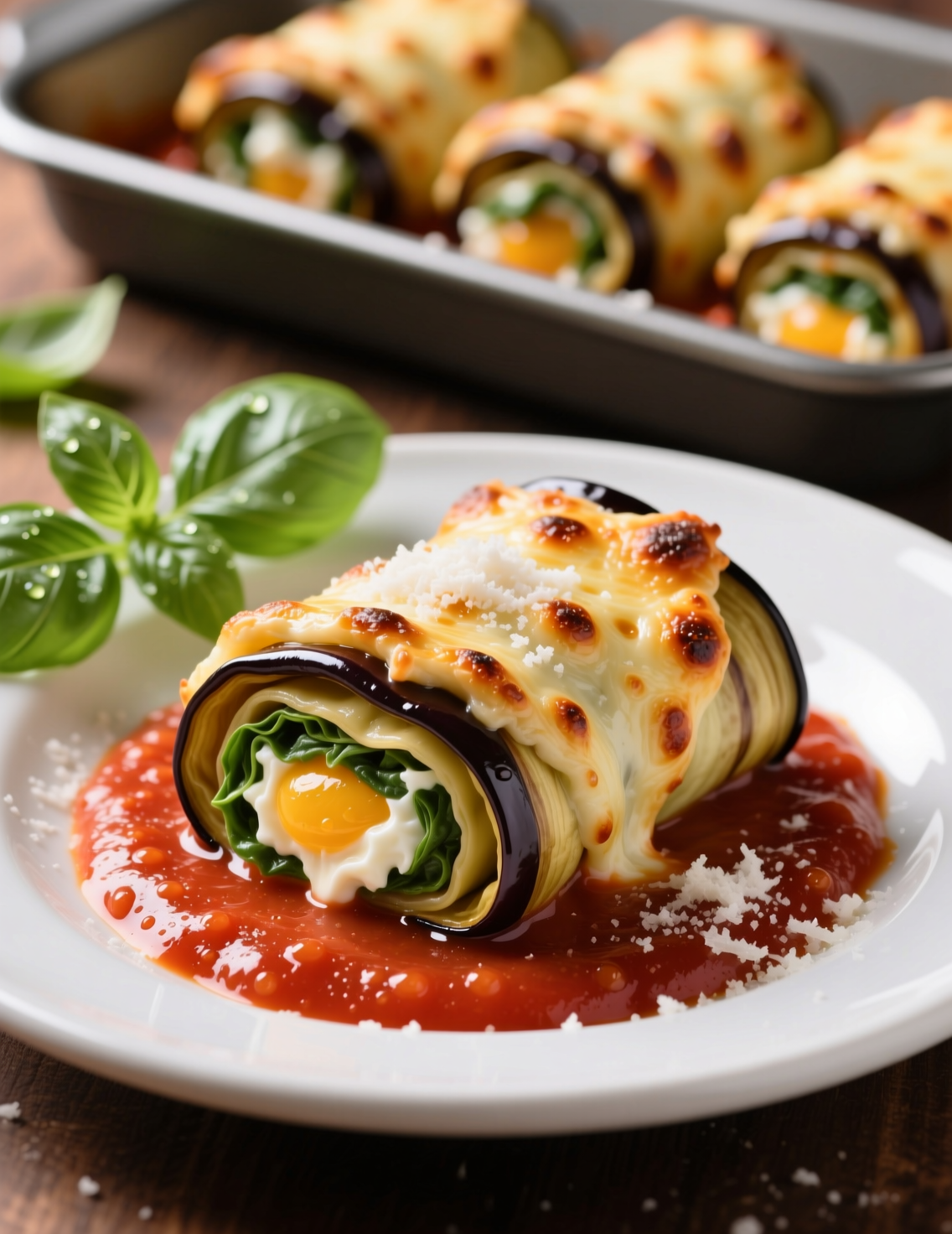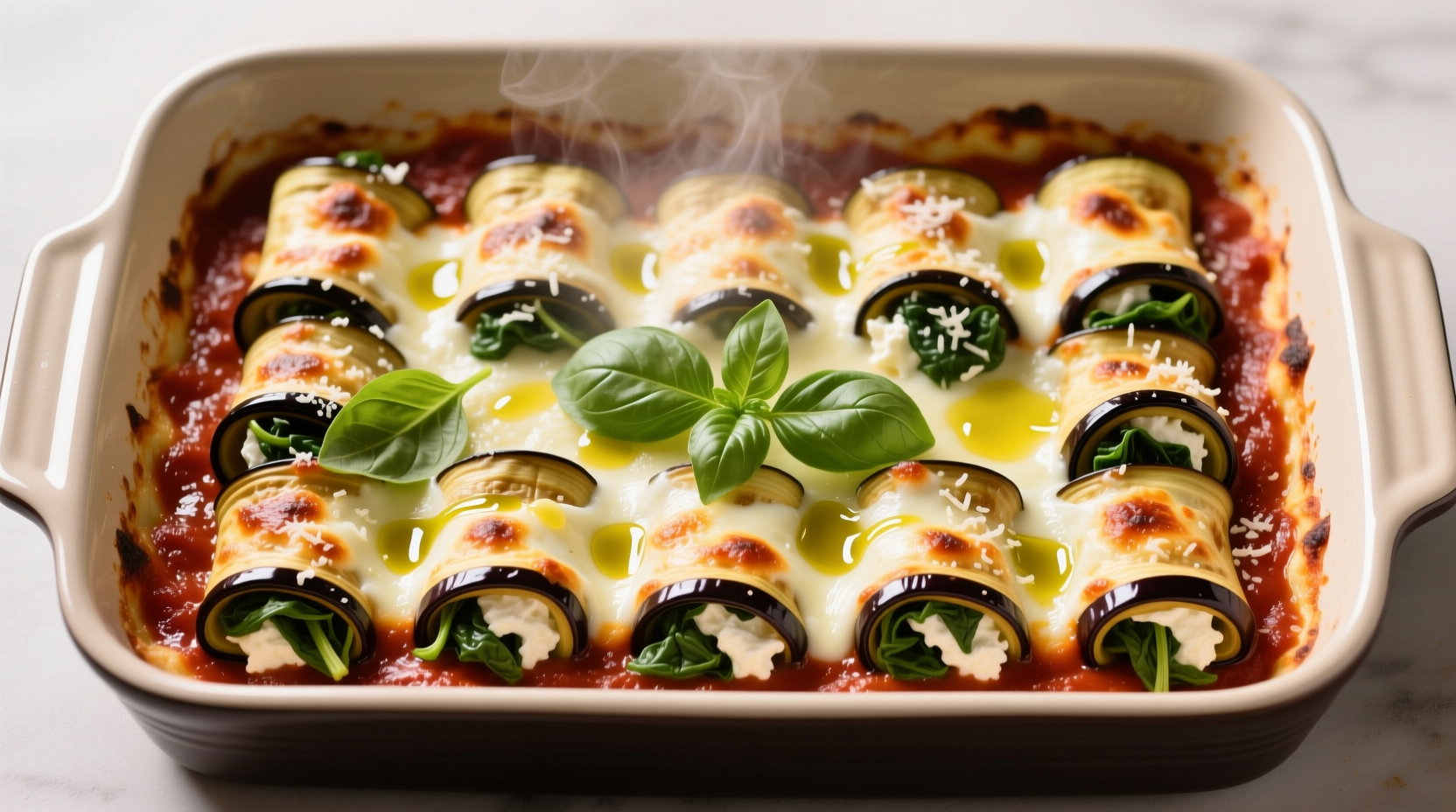Eggplant Rollatini doesn’t just sit there on a plate—it commands attention with its elegance. This isn’t your typical baked casserole hiding under melted cheese. It’s layered flavor engineering, a dish that professional kitchens love for its adaptability and health-forward profile. Here we’ll dive deep into crafting a healthy eggplant rollatini recipe for six servings, with insights that go beyond “just follow the steps.”
Why Rollatini Has Such Pull in Modern Cooking
Rollatini, sometimes mistaken for Italian-American lasagna’s cousin, is a stuffed-and-baked preparation using thin eggplant slices instead of pasta sheets. That swap alone slashes calories and cuts gluten completely out of the picture. For nutrition-focused kitchens, eggplant rollatini checks all the boxes: low-carb, nutrient-dense, visually striking.
But chefs know the trick isn’t just about healthy swaps. It’s about coaxing maximum character out of eggplant—a vegetable that can either turn silky and rich or collapse into soggy nothingness if handled poorly. That’s where technique comes in.
Ingredients That Carry the Dish
When I build rollatini, I don’t just think about ingredients as list items. Each component has a role, like instruments in an orchestra. For six servings, here’s a base you can trust, though adjustments can be made depending on season and clientele:
- 2 large eggplants, firm, about 1 lb each
- 2 tbsp olive oil (extra virgin, cold pressed if you can)
- 1 cup part-skim ricotta cheese
- ½ cup grated Parmesan
- 1 cup shredded part-skim mozzarella
- 1 egg, lightly beaten
- 2 cloves garlic, minced fine
- 1 tbsp fresh basil, chopped (or 1 tsp dried if desperate)
- 1 tbsp fresh parsley, chopped
- 2 cups marinara sauce (low sodium, preferably house-made)
- Freshly ground black pepper, to taste
- Pinch of nutmeg (trust me, it ties dairy to eggplant seamlessly)
This composition yields six plated servings with balance. You can scale, but avoid crowding pans. Overlap creates steaming, and steaming kills the beautiful roast edges that give eggplant its sweetness.
Eggplant: The Star Needs Prep
Professional chefs almost unanimously agree: eggplant needs taming. Raw eggplant is a sponge for oil, so direct frying is a trap if health is the goal. Instead, controlled roasting or grilling is the preferred approach.
Slice the eggplants lengthwise into quarter-inch sheets. Sprinkle lightly with kosher salt on both sides, set them on racks, and let them sweat for 20–30 minutes. This osmosis action draws out bitterness and tightens cell walls. Wipe dry before roasting.
Brush slices with a whisper of olive oil—not a paint job, more like a glaze. Roast at 400°F for 15 minutes until pliable but not collapsed. This stage is crucial because the eggplant must be flexible enough to roll yet structured enough to hold filling without tearing.

Filling: Where Restraint Wins
Cheese-heavy fillings are the downfall of most rollatini recipes. They drown the palate, leaving guests full after two bites. A healthy approach balances dairy with herbs and aeration.
Mix ricotta, egg, garlic, basil, parsley, and nutmeg until just combined. Don’t overbeat—air pockets change the texture when baked, making the filling too dense. Parmesan brings salty sharpness, while mozzarella is reserved mostly for the finish, not the interior.
A small spoonful spread onto each roasted eggplant slice is enough. Remember: the goal isn’t to overstuff but to let the eggplant wrap the filling gracefully.
Rolling and Baking: The Choreography
Rolling is like sushi—it requires attention to tension. Place a spoonful of filling at one end of the eggplant slice, roll gently, and set seam side down in a lightly oiled baking dish. Once all are arranged, ladle marinara sauce over them sparingly. Excess sauce creates a poach, not a bake.
Sprinkle mozzarella across the top, allowing bits of eggplant edges to remain visible for texture contrast. Bake uncovered at 375°F for 25 minutes, until the cheese melts golden and the sauce bubbles in rhythm.
Nutritional Value and Health Edge
For professionals serving health-conscious diners, the nutritional breakdown is a selling point. Based on this recipe (6 servings), each portion averages:
- Calories: ~220–250
- Protein: 14–16g
- Fat: 10–12g (mostly from olive oil and cheese, quality fats)
- Carbohydrates: 12–15g
- Fiber: 5–6g
Compared to a traditional pasta-based rollatini or lasagna slice, this dish trims nearly 30% of the calories and halves the carbohydrates. The high fiber from eggplant also aids satiety, a detail nutritionists appreciate when collaborating on menu design.
Professional Tips for Perfect Execution
- Use Japanese eggplants when available. They’re thinner and naturally less bitter, which means less salting and faster prep.
- Smoke the marinara. Adding a charred tomato or smoked paprika gives depth, a trick I picked up in a Tuscan kitchen.
- Play with micro-herbs. Garnishing with micro-basil elevates plating instantly without adding bulk.
- Mind the pan size. Overcrowding dilutes flavor concentration. Stick to one snug layer for clean rolls.
- Rest before serving. Just like lasagna, rollatini benefits from a 5–7 minute rest to stabilize cheese and sauce.
Common Mistakes to Avoid
Many home cooks stumble with three missteps:
- Over-salting eggplant. Salting is for purging, not seasoning. Always wipe the slices dry.
- Heavy saucing. Eggplant soaks moisture; too much sauce leaves you with mush.
- Skipping roast. If you try to roll raw eggplant slices, you’ll end up with torn sheets and frustration.
Trends and Modern Adaptations
In professional kitchens, rollatini has evolved into more than just Italian comfort food. Plant-forward dining movements have pushed chefs to experiment with vegan versions, swapping ricotta with cashew cream or tofu blends. High-end restaurants sometimes plate rollatini individually with precision garnishes rather than in a casserole-style dish.
Statistics from the National Restaurant Association’s 2024 “What’s Hot” culinary trends report noted that plant-based twists on traditional Italian dishes ranked in the top 10 customer requests. Rollatini fits perfectly into this trend by bridging indulgence with wellness.
Wine Pairings and Service Suggestions
Eggplant’s natural umami pairs well with medium-bodied reds. A Chianti Classico or Montepulciano d’Abruzzo complements the acidity in tomato sauce. For non-alcoholic options, a chilled sparkling water with lemon zest cleans the palate between bites, keeping the dish light.
Professional plating should highlight rollatini’s cylindrical form. Serve two rolls per plate, sauce pooled beneath, with a delicate Parmesan tuile or fresh basil leaf crowning the top.

Conclusion: The Dish as Both Comfort and Statement
Healthy Eggplant Rollatini isn’t just a dish for six; it’s a narrative of how professional kitchens can take a rustic idea and transform it into something modern, elegant, and health-conscious. Done right, it balances nutrition with indulgence, tradition with innovation.
For chefs, the takeaway is clear: precision in prep, restraint in filling, and control in saucing elevate rollatini from “nice dinner” to “memorable plate.” And for home cooks striving for restaurant-level execution, this recipe offers the perfect blueprint.
The true beauty? Guests rarely realize how healthy it actually is—they’re too busy savoring silky eggplant, creamy cheese, and bright sauce working together bite after bite. That’s the mark of culinary success.
FAQs
Can I make eggplant rollatini ahead of time?
Yes, you can prep and roll them a day before, refrigerate, then bake right before serving.
Do I have to salt the eggplant slices?
Salting helps reduce bitterness and moisture, so it’s strongly recommended.
Can I freeze eggplant rollatini?
Yes, assemble and freeze unbaked; bake directly from frozen with extra time.
What’s the best sauce for eggplant rollatini?
A light, low-sodium marinara works best to balance the rich filling.
Can I make eggplant rollatini without cheese?
Yes, swap cheese with cashew cream, tofu, or dairy-free alternatives.
How thin should the eggplant slices be?
Around ¼ inch thick—thin enough to roll but not tear.
What wine pairs best with rollatini?
Chianti Classico or Montepulciano d’Abruzzo balance the tomato acidity beautifully.
Is eggplant rollatini gluten-free?
Yes, since eggplant replaces pasta, it’s naturally gluten-free.
How many rolls per serving?
Usually two rolls per person makes a balanced serving.
Can I grill the eggplant instead of roasting?
Yes, grilling adds a smoky depth that enhances the overall flavor.

Mariana is a passionate home cook who creates delicious, easy-to-follow recipes for busy people. From energizing breakfasts to satisfying dinners and indulgent desserts, her dishes are designed to fuel both your body and hustle.
When she’s not in the kitchen, she’s exploring new flavors and dreaming up her next recipe to share with the Foodie Hustle community.

